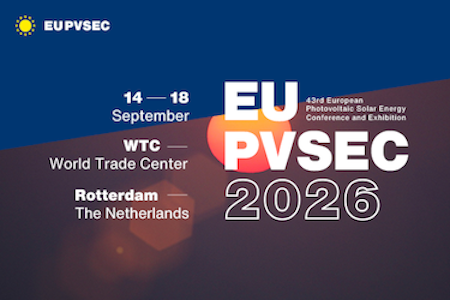Post - Blog
Utilities need to grasp what’s going on behind the meter
- 7 years ago (2018-08-02)
- Junior Isles

By Sachin Gupta, Senior Sales Director – North America, OMNETRIC

EU-PVSEC 2026
There’s an uncomfortable truth emerging alongside the proliferation of distributed energy resources (DERs) being integrated onto the grid; traditional grid management systems at the distribution level can often no longer adequately grasp what’s going on behind the meter. In these unprecedented times, utilities need to work harder to understand the broader ecosystem of customers and how they are producing and consuming power. Only with this insight can they can mitigate the new, potential risks DERs bring to the edge of the network: the looming danger of congestion.
Congestion, which occurs when too much electricity demand or too much electricity generation affects voltage and frequency. This can ultimately result in damage to circuit segment cables, fuses and transformers, as well as result in intermittent power production and outages across the distribution network.
As it is down to utilities to maintain the overall health of the distribution grid and mitigate the impacts of congestion, being blindsided about the location of small generation assets can be problematic. Their existence puts unpredictable strain on the grid and means that the risk of grid congestion is increasing. In an Accenture study published in 2017, “ Reap the benefits of smarter distributed generation integration ”, (Accenture Digitally Enabled Grid), nearly 60% of a global panel of utility executives stated that they expect to reach network hosting capacity for distributed generation in the next 10 years.
At present, when consumers drive an electric vehicle (EV) out of the showroom, there is no obligation to inform their electricity provider. Consequently, utilities have no way of knowing where these mobile batteries are located and how they can plan for infrastructure upgrades or improvements to accommodate the EVs. This is a far cry from the 1940’s when a utility company was informed each time a refrigerator—then then the most energy thirsty appliance—was purchased!
At OMNETRIC we recently consulted executives managing distribution networks across North America to provide us with a better understanding of the implications and risks of congestion. The research, brought to life in our latest whitepaper, ‘Watch out! Congestion ahead’, explores exactly how energy providers can better understand what’s going on behind the meter to avoid the consequences of congestion.
How can utilities look behind the meter?
In the new energy economy, driven by a smarter and more diverse energy mix, data is fast becoming the most valuable asset to utilities. If data is the lifeblood, software becomes the heart of the utility of the future, controlling assets and influencing customer behavior. Nevertheless, utilities best placed to master the grid and handle the new imperatives, recognize that software alone will not solve the problem.
In order to harness data, hardware that generates intelligence, such as meters and sensors need to render assets at the grid edge smarter—both more intelligent and faster. There’s a multitude of small assets and interconnections within the distribution grid that cannot be controlled by a central intelligence system. In a system where power flows are less predictable, it makes sense to collect the right data and enable autonomous management of smaller events, directly at point of need. Indeed, the data generated by smart meters—of which more and more will be in near real time—is starting to provide utilities with new capabilities for not only enhancing customer choice, but improving operational efficiencies in grid management.
If the combination of hardware and software has the potential to help mitigate the risks of intermittent generation at the grid edge, behavioral insight is the third leg of the stool: those three can provide the basis of a credible master plan or otherwise known as a distributed energy resource management solution (DERMS). Such solutions can facilitate the direct or indirect control of assets, combine data from different sources and address customer price signals and form a good example of an integrated approach to fighting congestion. Furthermore, this data can help with the emergence of a customer-centric, value-based approach in which every action is evaluated and charged according to the positive or negative impact it has on the grid.
Nevertheless, as has always been true for transformational projects underpinned by technology, implementation should be done in keen alignment with the utility’s future business and grid strategy. All too often today, utilities want to have conversations about which products will help them manage renewables penetration and not about the future scenarios and capabilities they need to fulfill. Breaking down the problem and starting with use cases and pilots may seem a traditional response to a new problem, but the resulting data can help scale a more future proof solution.
By truly understanding what’s going on behind the meter, utilities have the potential to not only avoid the damaging the impacts of grid congestion, but also to make considerable cost savings. In a fictional scenario, we projected that by tackling congestion, utilities could secure average yearly benefits ranging up to $20,000 per MW of connected DER capacity, or $4.5 million over 10 years. See the report for the scenario modelling
( www.omnetric.com/energycongestion ).
As it stands, utilities are only just scraping the surface of how data can transform their response to grid management. By looking behind the meter and using the data gleaned from state of the art hardware and software, utilities can create new services and solutions to benefit their customers and their bottom line. With the rapid uptake of DERs, now is the time to act and to ensure customer behavior is at the heart of everything they do.
